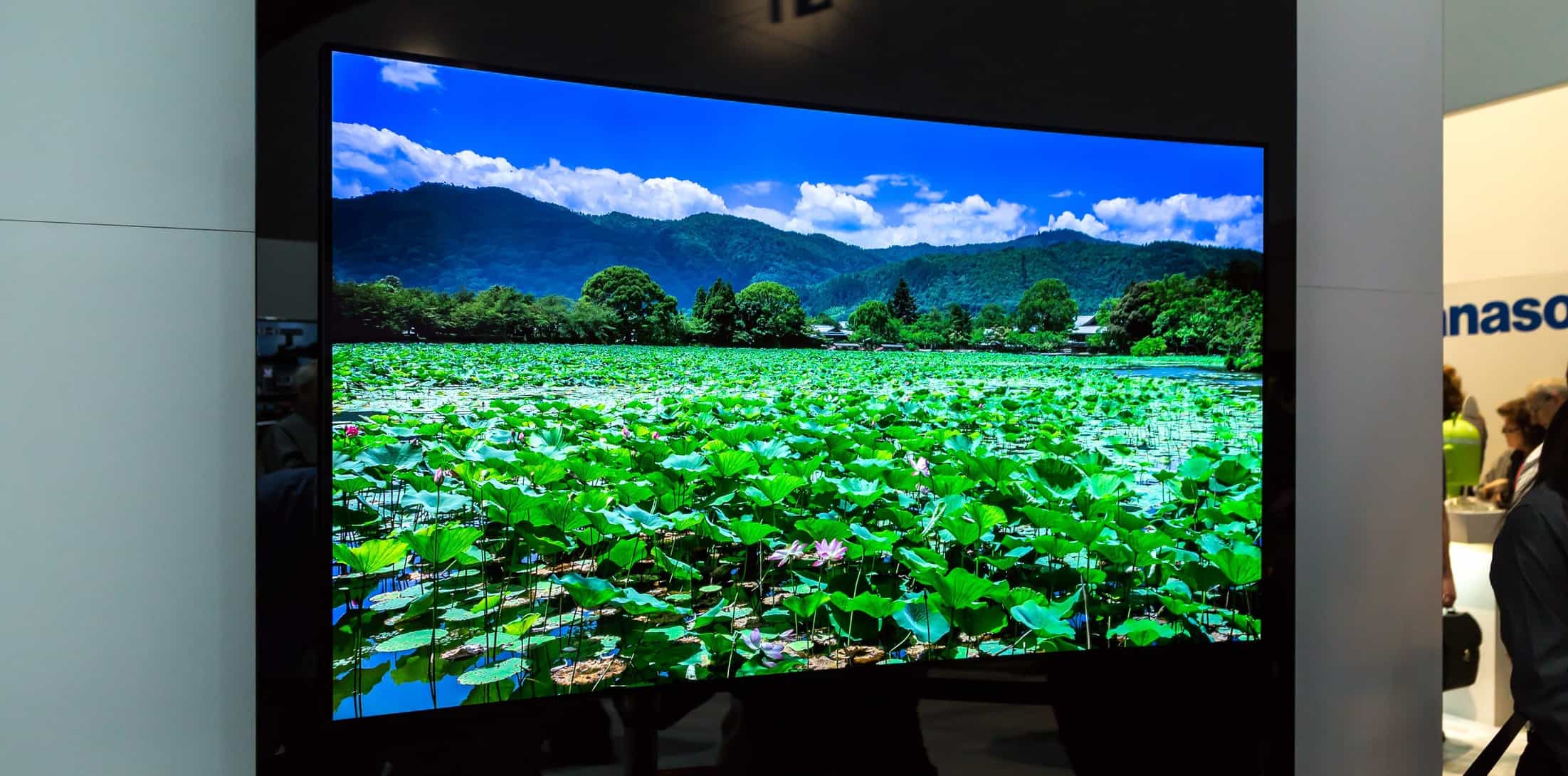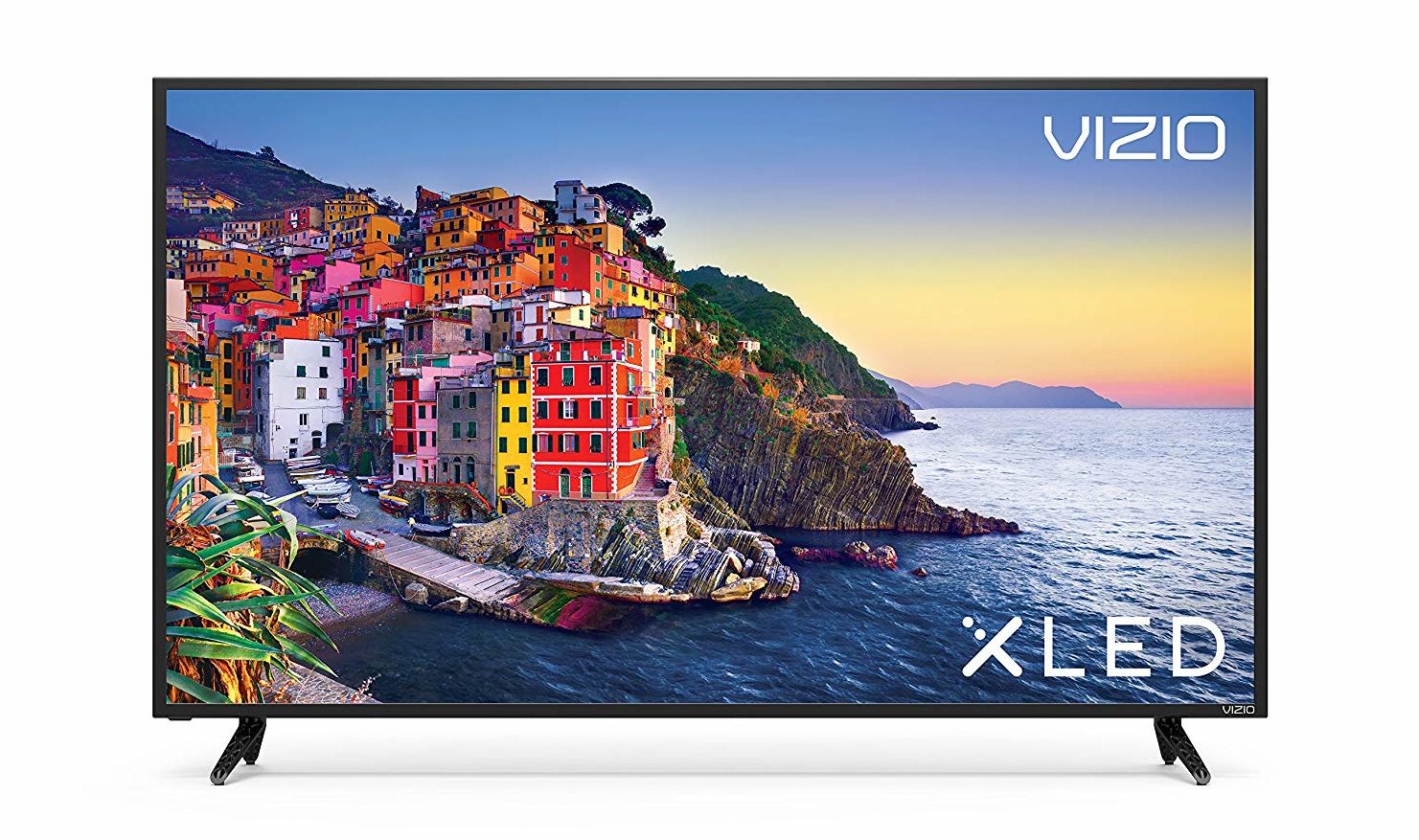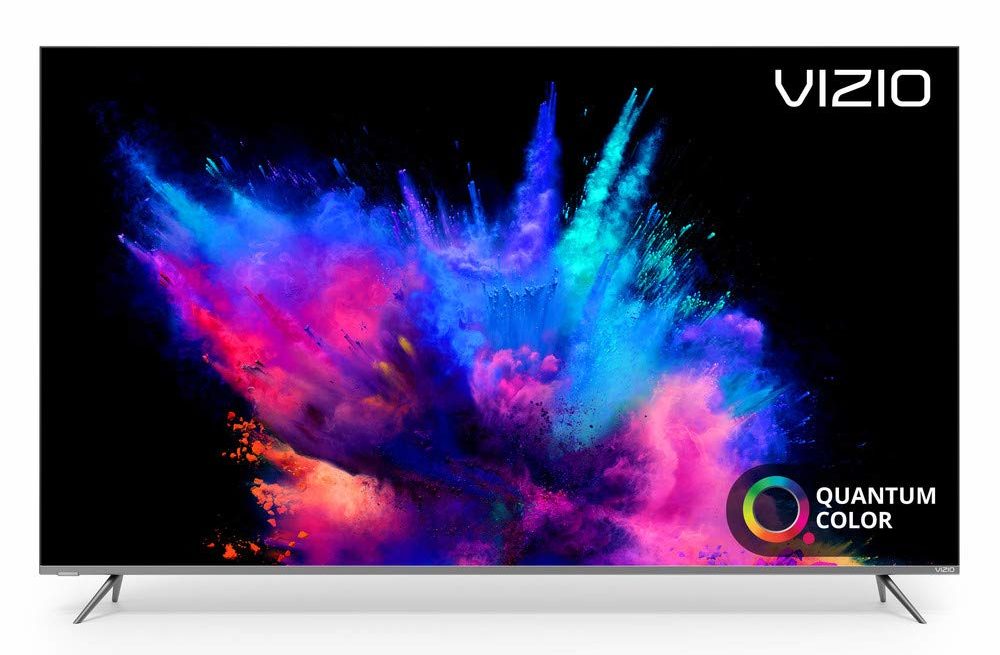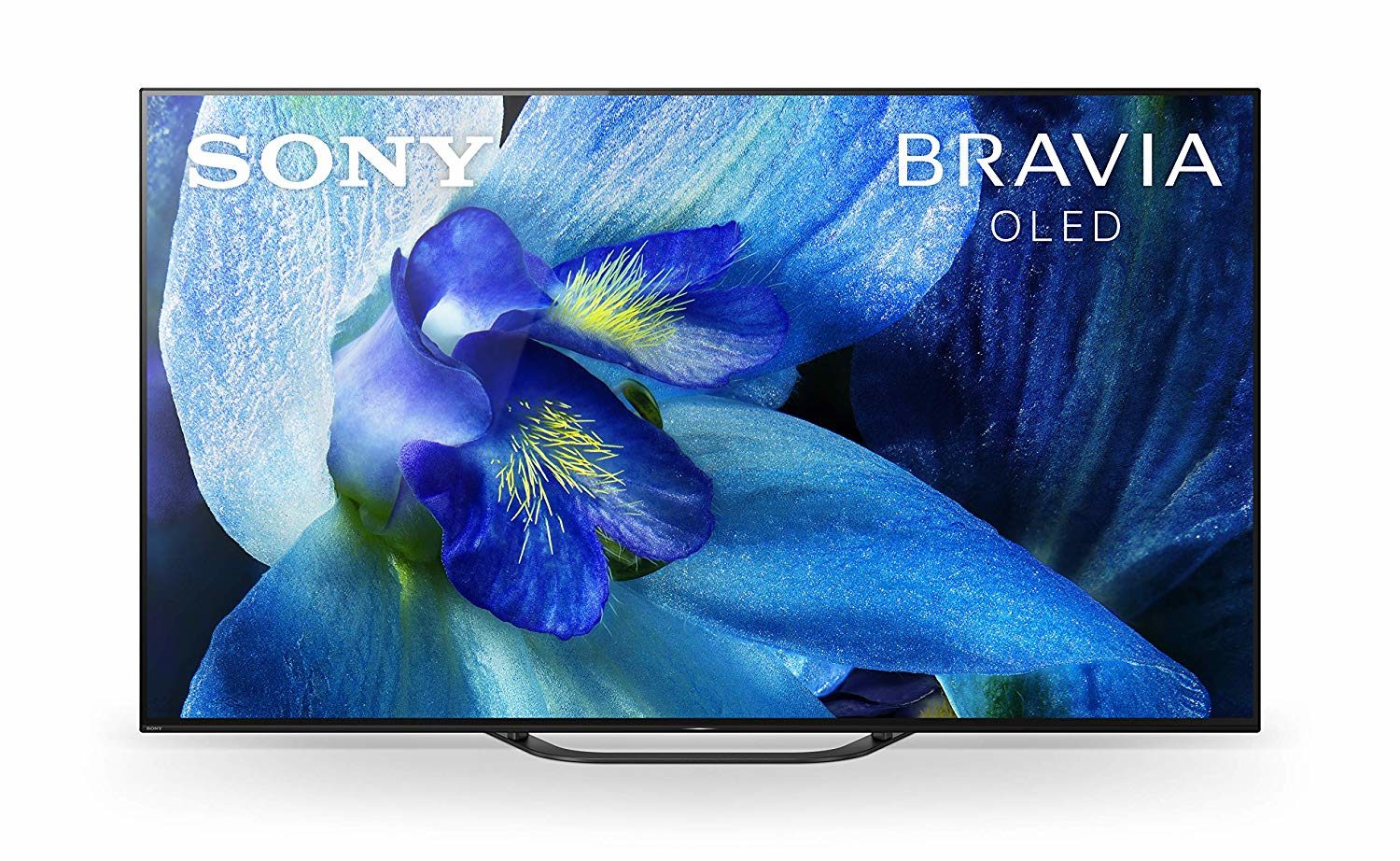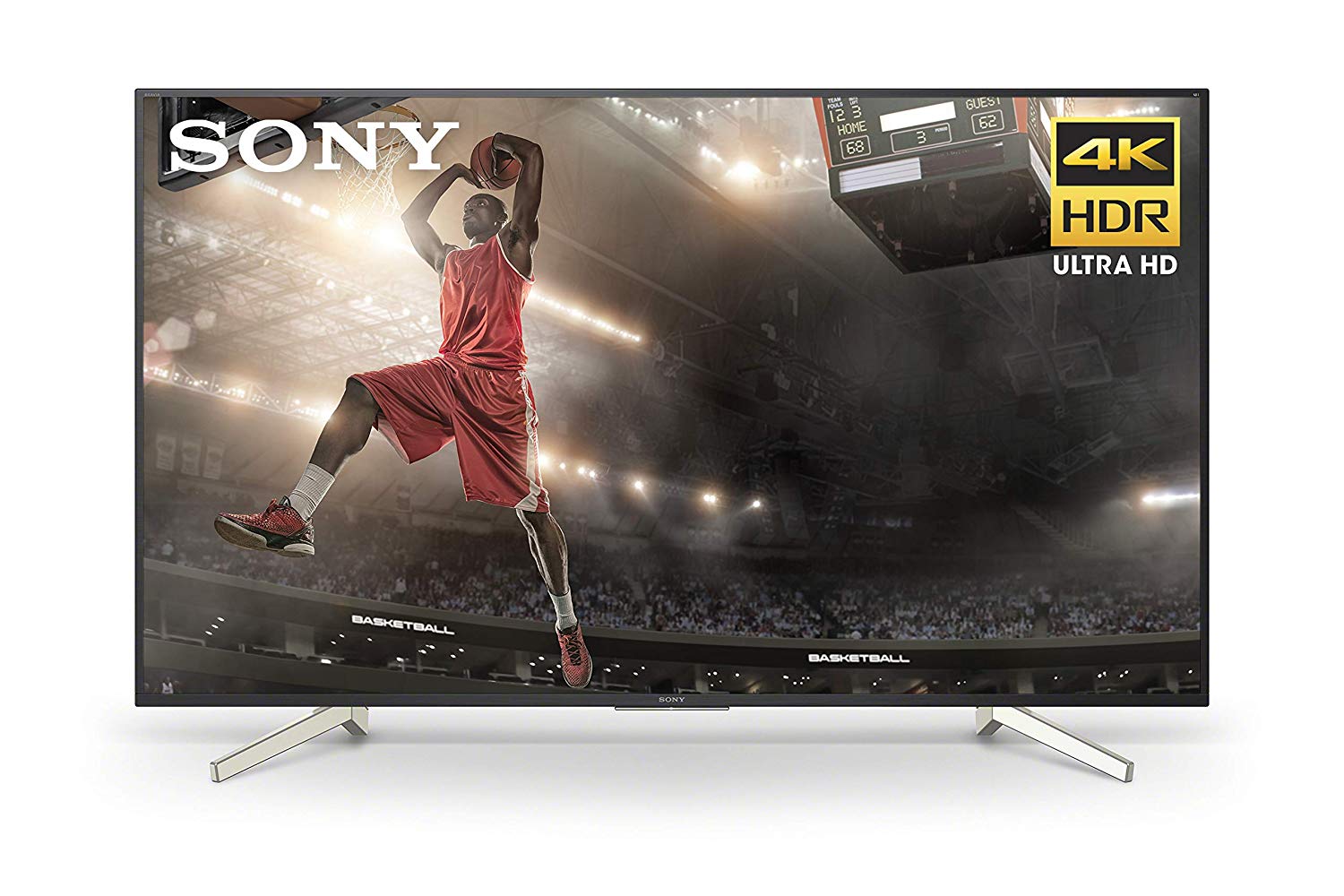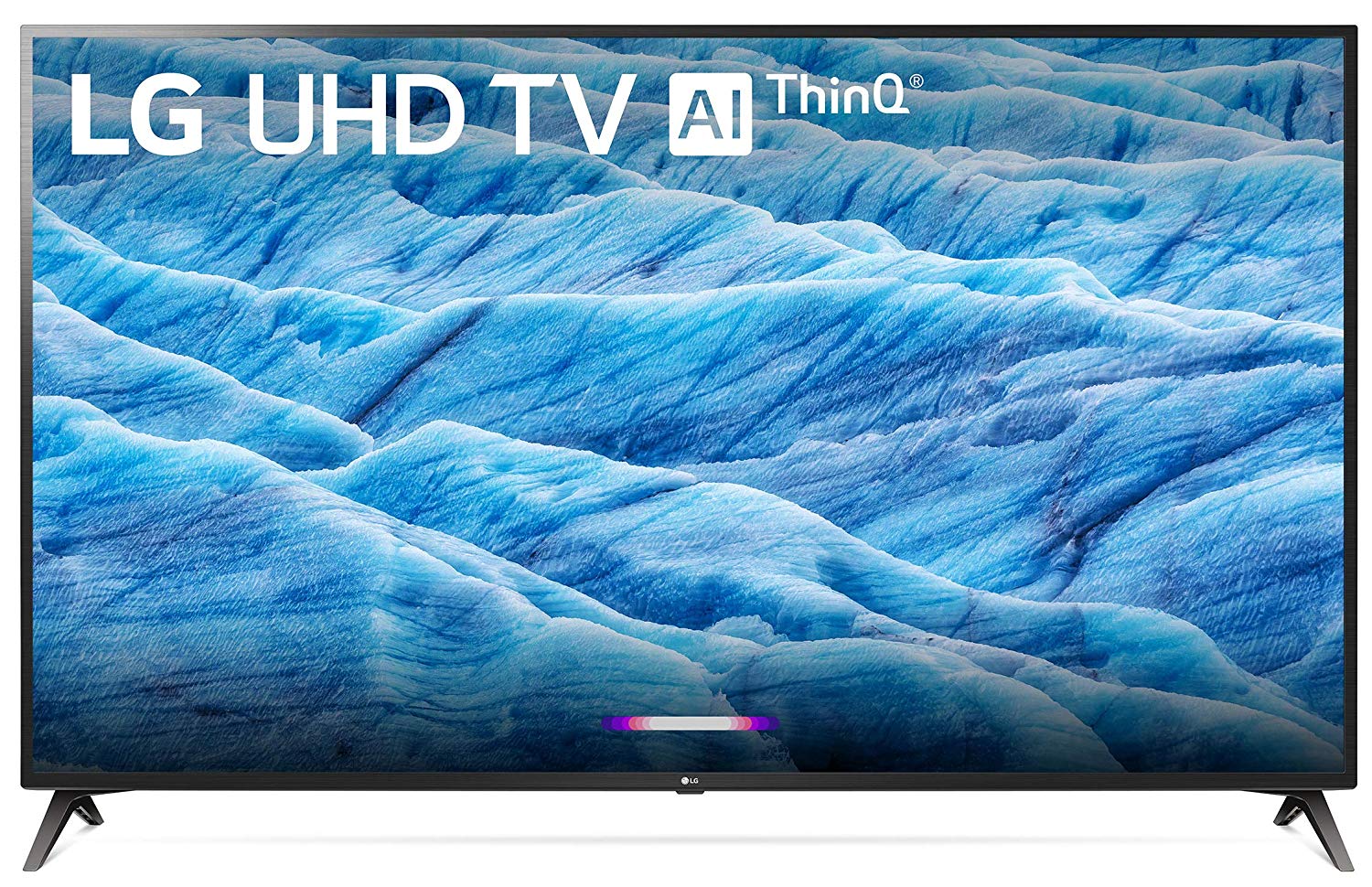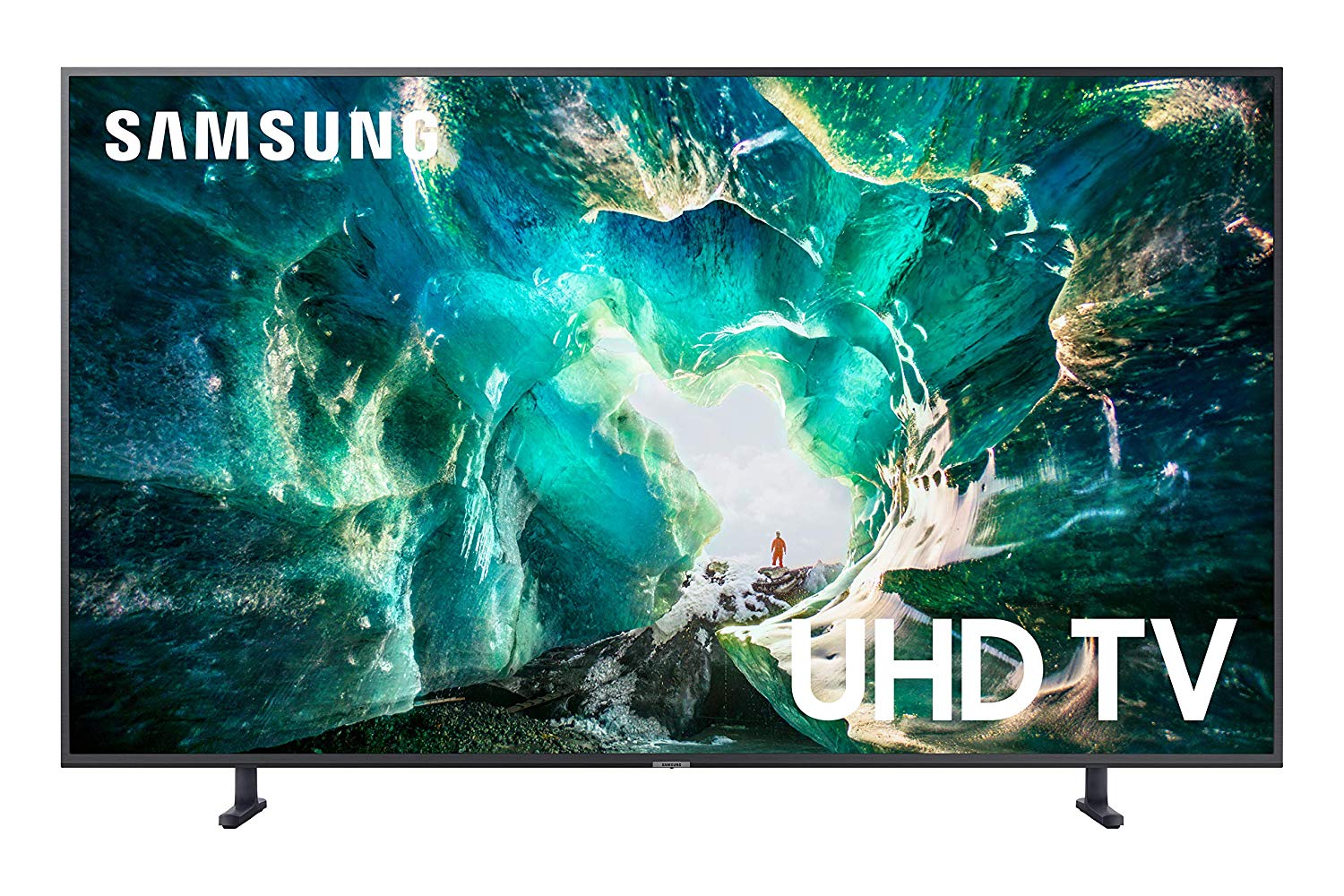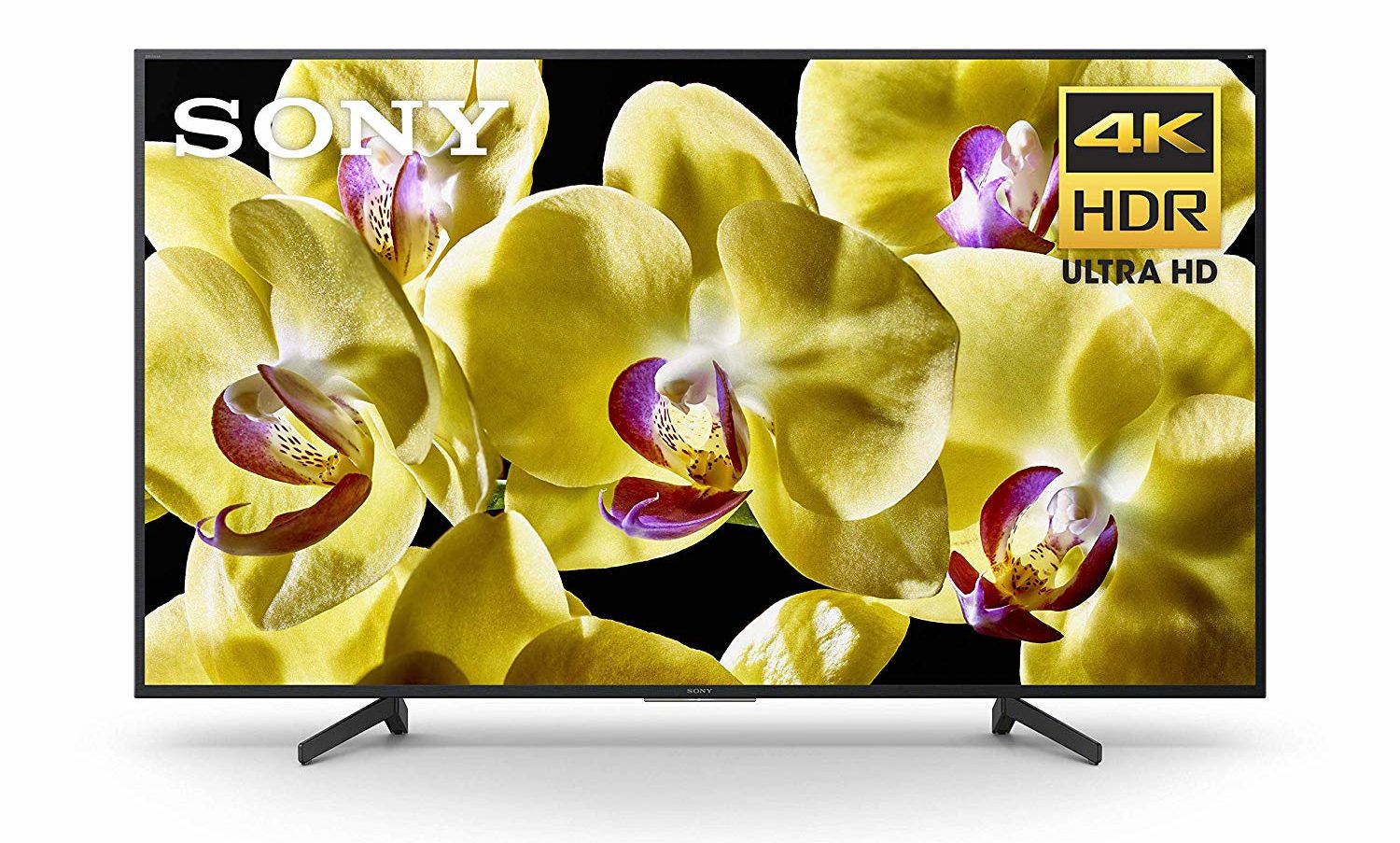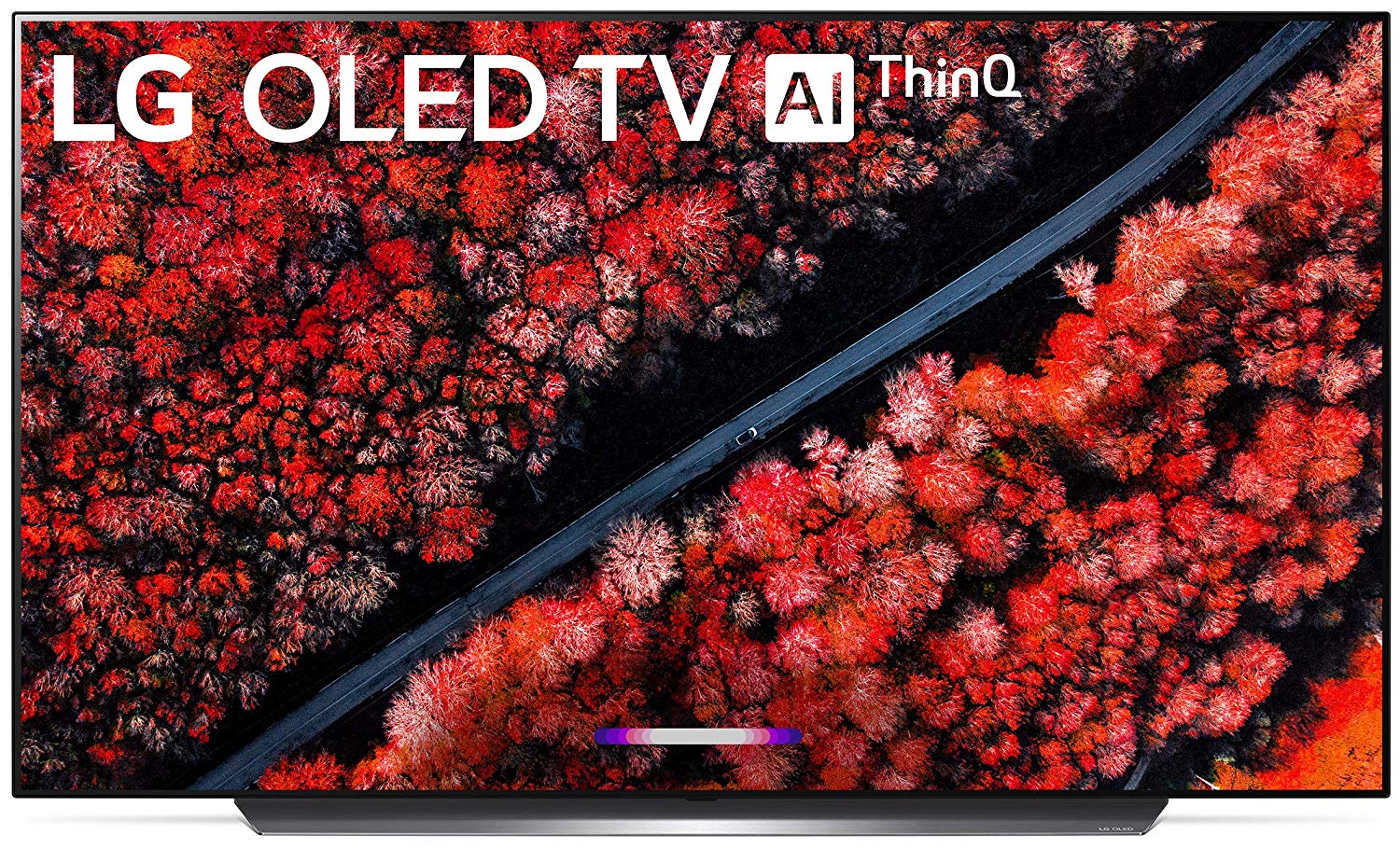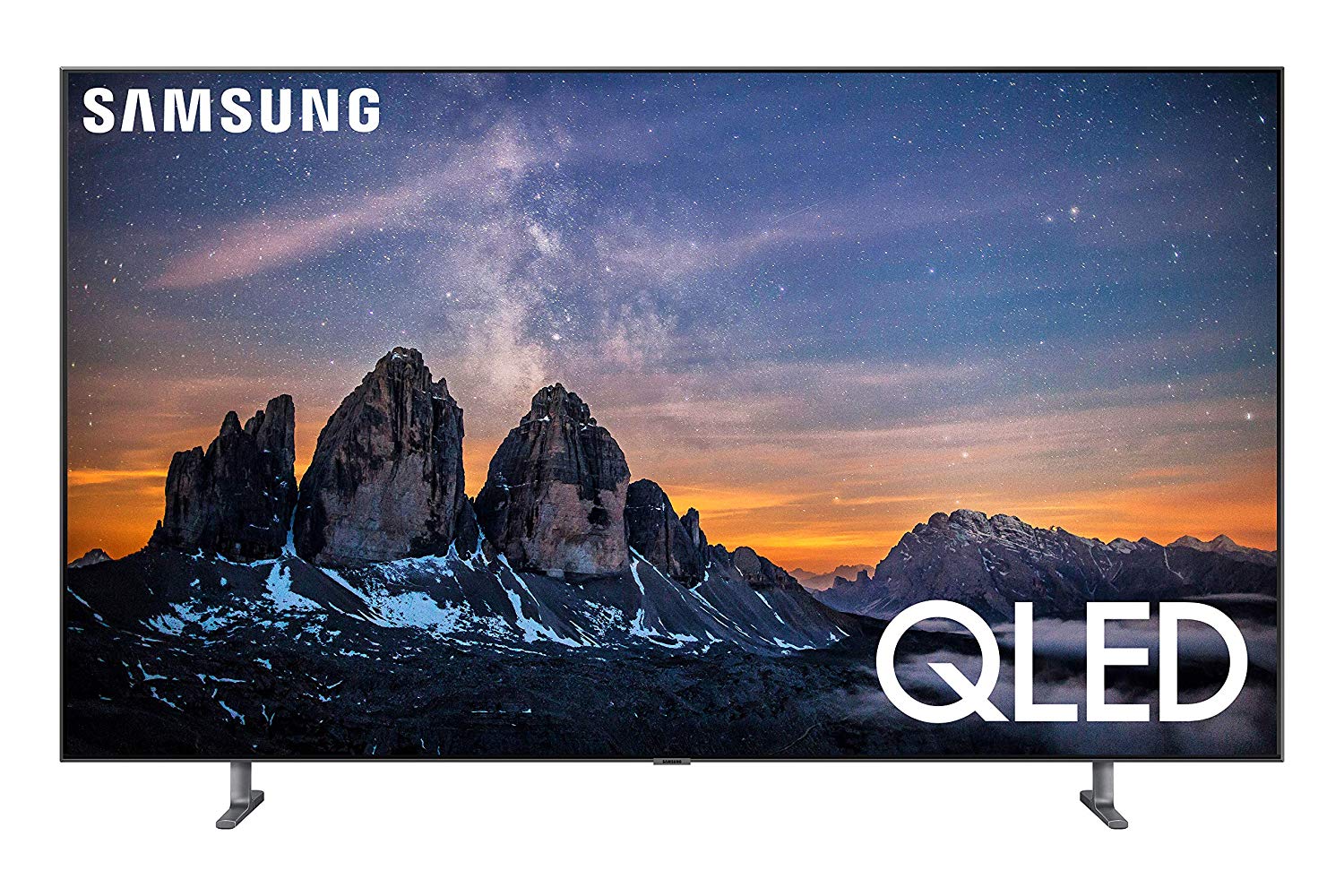Our team scoured the web looking for the top television models, and we ultimately determined the best 70 inch 4K TV is VIZIO's M70-F3. We chose this as our Editor's Choice based on its design, feature set, and performance for the reasonable price-point.
However, if you have the flexibility of choosing a slightly smaller or larger sized screen, you'll likely find more overall bang for your buck if you were to purchase a 65 inch or 75 inch models.
Those who have the space to accommodate a 75-inch 4K TV, we think the VIZIO P759-G1 is the ideal choice for most people. This model offers a great 240 HZ panel mixed with Quantum Dot technology and supports the three most popular HDR formats.
If you'd be willing to drop down a size and go with a 65-inch 4K TV, then Sony XBR65A8G is going to be the optimal choice for most. While more expensive than many larger televisions, the OLED display provides perfect blacks, increased contrast ratios, and excellent viewing angles.
Editor's Choice
VIZIO E70-F3
The best model overall in the 70-inch 4K TV market offering excellent specs and value for a reasonable price.
VIZIO's 70-inch TV packs a punch with built-in support for Amazon Alexa and Google Assistant as well as 4K ultra high definition with support for both HDR10, HLG, & Dolby Vision high dynamic range formats alongside a true 120HZ panel.
Pricing as of 8/20/19*
Best 75-Inch Alternative
VIZIO P759-G1
If you don't mind an extra 5 inches of screen, this VIZIO offers all the specs you'll need at a reasonable price.
VIZIO delivers with their P759-G1 television packing in a quality 240HZ UHD Quantum Dot panel, SmartCast 3.0, built-in Chromecast, and support for both HDR10, Dolby Vision & HLG.
$2,499.00 from Amazon
$1,999.99 from B&H Photo*
Pricing as of 8/20/19*
Best 65-Inch Alternative
Sony XBR65A8G
While you drop 5 inches in screen size, you gain the advantage of perfect blacks from the OLED display.
Sony's OLED TV panels are some of the best on the market thus why they charge the premium price. Video content looks better thanks to increased contrast ratios and wider viewing angles. This model supports all modern HDR formats and has excellent smart functionality.
from Amazon
$2,498.00 from B&H Photo*
Pricing as of 8/20/19*
Guide Shortcuts (Jump To A Section)
Where Are All The 70 Inch TV Models?
What To Look For In A New TV
Best 70 Inch 4K TVs
65 Inch 4K TV Alternatives
75 Inch 4K TV Alternatives
Final Summary
In this article, we'll do our best to answer the common question concerning the search for a 70″ 4K TV model like what to consider, things to keep in mind and other alternate recommendations in a slightly larger or smaller TV sizes.
We suggest reading through the entirety of this article and if you are still unsure which is best for your needs, leave a comment with any further questions or concerns. One of our staff will do their best to provide helpful insight to clear up any confusion.
Where Are All The 70 inch TV Models?
If you've already begun your hunt for a new 70″ television, you've probably run into this dilemma. Why are there barely any 70 inch TV models on the market?
For example, a quick search for a 70 inch 4K TV on both Amazon and B&H only bring up a combined total of four different models. Included in these results are three newer models from VIZIO and Sony as well as a discontinued Samsung TV released in 2016.
While these are all reputable brands, some of you may be scratching your head as to why there aren't more 70-inch models offers. The reason for this is television manufacturers tend to stick to a general sizing formula that follows the industry's standards for screen sizes.
You'll see a lot more variations of TV sizings under 32″. After surpassing this mark you'll traditionally see the screen sizes as follows (measured in inches from corner to corner):
- 32 inch
- 40 inch
- 42 inch
- 50 inch
- 55 inch
- 60 inch
- 65 inch
- 75 inch
What To Look For In A New TV
Technology has come a long way over the past decade. When making a large purchase like a television, you are better off buying a TV with all the bells and whistles that will last you 5-7 years than a cheaper model that will only last 1-3 years. Here is what you should look for when choosing a new model:
1) 4K UHD (Ultra High Definition) resolution
Over 81.9 million 4K UHD TVs will have been sold during 2017 according to a study from Statista. This is a staggering number when you consider this figure was as low as 10.2 million just three years earlier (2014).
4K Ultra High Definition is exactly four times the amount of pixels as Full HD aka 1080P. The larger pixel count makes the television's resulting image offer more clarity with cleaner lines.
Here's a video that expresses the differences more effectively:
https://youtu.be/RodCjVf-5AE
While it is true that traditional TV content providers like Comcast, Time Warner Cable or DISH haven't yet adopted native 4K programming, it will transition to this over the next 3-5 years just like it did with standard definition to HD.
Additionally, you can access 4K UHD content through streaming services like YouTube or Netflix as well as on game consoles like the Xbox One X or PS4 Pro.
2) High Dynamic Range (HDR)
By definition, HDR is the concept that a display panel can produce more shades of luminance (brightness) between the darkest and brightest areas of an image.
With the increased amount of detail in the shadows and highlights, you receive a better overall viewing experience along with a higher number of color variations, thus making the image feel more authentic.
HDR is making its way to the mainstream in the same fashion as 4K UHD with content being offered by services like Youtube, Netflix or Amazon Video as well as through the latest game consoles.
https://youtu.be/KymaqNGSFY8
While many models market themselves as HDR-ready, there are several standards which depict how good the HDR is. For example, the three most prevalent standards in consumer televisions are currently HDR10, Dolby Vision, and Hybrid Log Gamma (HLG).
HDR10 is the more common standard that televisions will ship in compliance with. Dolby Vision is a brighter, more colorful version of HDR offering millions more screen color variations.
Without getting overly technical, most TVs that ship supporting Dolby Vision do not offer a panel with enough color depth (10-bit versus 12-bit) to handle the full potential of the format. There is still a noticeable improvement over HDR10 with supported content.
3) Smart TV functionality
Since the shift to interconnectivity between televisions and the Internet, smart TVs have been around for several years now. Due to this, 4K UHD models have become followed the standard to ship with smart TV functionality from the start.
These smart TV capabilities will allow you to access streaming services like Netflix, Hulu, Amazon Instant Video, Crackle, and more. In some cases, you can even surf the web, see the weather predictions, or browse your Facebook feed.
It is also important to note that not all smart TV operating systems are not all equal. Some may perform better or offer more features than another.
At the 70-inch TV size, you will almost always find these 4K models shipping with integrated Smart TV technology, so be sure to verify this before buying.
If it doesn't offer this feature, you'll likely want to invest in a Chromecast, Roku or Amazon Fire TV to supply smart TV functionality.
4) High Refresh Rate
A display panel's “refresh rate” is defined as how often the TV changes the image or ‘frame' on the screen. This means a 60Hz panel will change 60 times per second. The higher the number, theoretically the better the performance will be primarily with fast motion like sports or gaming as you decrease the level of visible motion blur.
You'll want to try to purchase a model with a high refresh rate such as 120Hz which is relatively common at the 70-inch size. Ideally, you'd like to choose a model with a 240Hz refresh rate although this is not commonly offered in 4K models and more common in 1080P versions at this time.
https://youtu.be/KTY9uDD0x14
Keep in mind, there is a lot of marketing jargon used by manufacturer's to overpromise their refresh rates. Words like ‘MotionFlow', ‘Clear Action Rate' or ‘True Motion' usually mean the refresh rate is half of the number that follows. Example: ‘TruMotion 120' is a 60Hz refresh rate.
5) Supports VESA Wall Mounting
While almost every TV you buy new will include a stand in the box, the truth of the matter is a 70-inch model will likely be too large to place on most surfaces in your home.
Due to this, you want to make sure the model you choose is compatible with VESA mounts so you can secure the television to your wall or another area safely. All of the TV models that I'll recommend below support VESA wall mounting unless otherwise mentioned.
VESA mounts are measured in millimeter sizings. At the 70-inch mark, you'll likely see models offering compatibility with 400 x 400mm mounting hardware, but this may differ slightly depending on the model.
Best 70 Inch 4K TVs
VIZIO E70-F3
Pros
- True 120HZ panel offers great performance
- HDR10, HLG, & Dolby Vision HDR compatible
- Built-in Chromecast with Alexa & Google Assistant
Cons
- VIZIO's SmartCast OS isn't as user-friendly as the competition
- Not the most appealing design or form-factor
The E70-F3 from VIZIO is part of their budget line-up. While it offers the most appealing price-point for many consumer households, the build doesn't quite live up to the higher standards set by their M-Series.
You still get a solid 4K UHD panel with HDR support for the three major formats: HDR10, HLG & Dolby Vision. This is a real 120HZ panel so you won't have to settle for the lower 60Hz refresh rate found on many budget models.
Similar to the M-Series, you'll be able to cast streams from your mobile devices via SmartCast. While I prefer a Chromecast experience over dedicated Smart OS, this isn't as beginner-friendly so that may be a burden to some.
Sony X830F
Pros
- True 120HZ panel offers great performance
- Both HDR10 and HLG compatible
- Runs Android TV with support for PlayStation Vue
- Slim bezels and thin design with sturdy legs
Cons
- The most expensive 70-inch television on this list
- Would have liked Dolby Vision HDR support
Sony has been a massive player in the television and home theatre game for the last few decades. Their X830F is a 70 inch model packing impressive specifications when compared to the competing 70″ 4K TVs. Internally, there is an actual 120HZ panel which offers better performance for gaming and watching high-paced action like sports or movies.
You've got full smart capabilities with the internal Android TV which has native support for PlayStation Vue if you are looking to cut the cord. There is integrated voice support for Google Assistant. HDR10 and HLG formats are both compatible offering better color reproduction and detail in the shadows and highlights of your subjects.
There isn't a lot to complain about with the X830F, but it is the most expensive of the 70″ 4K TVs currently available. It also lacks support for Dolby Vision. This is an HDR format that you'll typically only find on the higher-end television, yet many think it offers the best HDR experience.
LG 70UM7370PUA
Pros
- Supports both popular HDR formats: HDR10 & HLG
- Has built-in support for Alexa & Google Assistant
- Thin bezels & slim design
Cons
- Only a 60HZ panel (with TruMotion 120)
- Only 3 HDMI ports (2 side, 1 back)
- Panel backlighting is rather basic for current LED technology
The 70UM7370PUA is an affordable and true 70-inch TV model from LG offering decent bang for your buck. It packs support for the two most popular HDR formats: HDR10 and HLG. Additionally, this television has built-in support for Alexa & Google Assistant for voice commands with a design that offers thin bezels.
On the other hand, there are some downsides with the panel being capped at 60HZ which isn't ideal for gaming or for watching fast-paced subjects. There are only three HDMI ports in total (we prefer at least four) and the direct-lit LED panel isn't all that impressive in today's technology standards.
Solution #2: Go Big Or Go Home
As I stated earlier, the amount of 70 inch 4K models is notably slim as manufacturers tend to stick to the 75 inch size when creating a model with a screen this large.
If you are willing and able to make the jump up in both size and pricing, there are a lot of viable 75 inch models to consider.
I'll name just a few below, but I'll plan to write up a similar style article as this focused entirely on 75 inch 4K TVs in the future if there is enough demand.
75 Inch 4K TV Alternatives
Samsung UN75RU8000FXZA
Pros
- Offers 4K UHD with Quantum Dot technology
- Supports HDR formats like HDR10+, HDR10 or HLG
- Offers Bixby voice commands
Cons
- Expensive at nearly $2,000
- Motion rate 240 really only equals to 120 HZ
- Doesn't offer Dolby Digital HDR format
A few years ago at CES, Samsung introduced its SUHD technology which stands for “Super Ultra High Definition.” While this term sounds rather gimmicky, the truth is that it is the same 4K UHD resolution just using ‘Quantum Dot' panel technology to achieve better contrast and deeper blacks.
For an in-depth explanation of Quantum Dot technology, you can check out MKBHD's video as he does an excellent job explaining the technology better than I could in text. You'll pay a premium for the Samsung name brand so that plays a role in higher price-point, but this model is gorgeous from an aesthetic viewpoint.
These models specifications are solid yet the lack of Dolby Vision support is disappointing at this price-point. I also want to make it known that the Motion Rate 240 really only translates to 120Hz which is good, but not as high as 240Hz which the marketing term implies.
Sony X800G
Pros
- Priced affordably at under $1,500
- Support for both HDR10 & HLG formats
- Offers AndroidTV and Google Assistant/Alexa support
Cons
- Only 60HZ panel
- Not the most appealing design
- No support for Dolby Atomos HDR
Sony has released a large number of 4K TVs for 2019, and their X800G offers 4K HDR performance at the 75-inch size without breaking the bank. There are a lot of things to like about this television, including the thin design.
As you'd expect, this model packs a 4K UHD panel that conforms to the HDR10 and HLG standards, but no support for Dolby Vision. The panel is only 60HZ, which is less than ideal for fast-paced viewing on a screen this large.
Something that I like about this model is that it offers an authentic Smart TV experience with Android TV natively integrated. Android TV works with Google Assistant for voice control via Google Home. Amazon also has certified this model to support Alexa commands, which is another cool perk.
VIZIO P759-G1
Pros
- Sleek design with thin bezels
- Quantum Dot offers deep blacks and rich color
- HDR support for HDR10, HLG & Dolby Vision
Cons
- Expensive at nearly $2K
- Quantum Dot performance isn't as good as OLED
- SmartCast isn't as intuitive as competing SmartOS
VIZIO's P-Series Quantum is the second highest-end television model that the company makes. This model offers a panel with Quantum Dot technology offering 240 local dimming zones mixed with support for HDR formats including Dolby Digital, HDR10 and HLG.
From a design standpoint, the P759-G1 is thin and sleek with small bezels surrounding the sizeable 75-inch screen. This large size requires two legs that are spread far apart so you'll need plenty of space on an entertainment stand or ample room for wall mounting.
In terms of smart technology, you get access to VIZIO's SmartCast 3.0 with a built-in Google Chromecast. Additionally, there is support for Apple's Airplay 2 for sharing your screen via compatible Apple devices.
Solution #3: Drop Down In Size & Reap The Benefits
As I mentioned earlier, the 65 inch screen is one of the most common sizes that manufacturers aim to produce models for. This is primarily due to the practicality of fitting a 65″ model the average consumer's home (versus something larger) as well as the general price-point.
The significant benefit to dropping down from a 70 inch to a 65 inch is that you get a greater variety of models to choose from and since the competition is so fierce in this category, there is a lot more bang for your buck.
65 Inch 4K TV Alternatives
Sony XBR65A8G
Pros
- True OLED panel offers perfect blacks
- Supports IMAX Enhanced and Dolby Vision HDR
- Offers Android TV with built-in Alexa/Google Assistant
Cons
- Very costly at nearly $2,500
- Base design isn't the most sleek
- Doesn't offer the Netflix calibrated feature of the higher-priced A9G
While Sony hasn't been dominating the television game as of late, their XBR65A9G puts the company back on the map with highly competitive specs that match or surpass their close rivals. The design is thin and sleek, but the rear stand offers a unique design that not everyone will like (I'm personally not a fan).
The most notable advantage to their A8G line-up is the OLED support, which is more common in 65-inch market than larger screens due to its complexity and higher panel cost. OLED offers the ability to turn off its pixels to transmit true blacks completely. This is unlike LED or LCD, which function by simulating black while remaining backlit.
Beyond the OLED technology, this model ships with Android TV running natively in the backend for full Smart TV capabilities along with support for Google Assistant and Amazon Alexa voice control.
HDR support is native for HDR10, HLG and Dolby Vision right out of the box. Something that the XBR65A8G supports that the competition doesn't is IMAX Enhanced which offers a full IMAX experience from the comfort of your own home.
LG OLED65C9PUA
Pros
- True OLED display offers perfect blacks
- Ultra thin design is elegant & sleek
- Supports all major HDR formats
- Smart compatibility via WebOS & Alexa/Assistant
Cons
- Thin design makes it fragile
- Native internal speakers are small and weak
- An expensive investment
LG was one of the first major manufacturers to bring OLED panels to their consumer televisions which have put them at the top of the market in the last few years. Their C9 OLED line offers a lot of value on the dollar with an ultra-thin design made possible due to the lack of a backlight for OLED.
While you get the perfect blacks from OLED, LG has created this model to perform with integrated webOS (with built-in voice compatibility for Amazon Alexa & Google Assistant). It offers support for all HDR formats including HDR10, Dolby Vision, and Hybrid Log Gamma.
Since the screen is so thin, LG didn't decide to integrate any bulky speakers for optimal audio performance. This means you'll only get Dolby Atmos 2.2 Ch 40W speakers (plus a 20W woofer). Fortunately, this can be easily remedied with a soundbar or surround sound system down the road.
Samsung QN65Q80RAFFXZA
Pros
- Quantum dot display offers great brightness & color
- Direct Full Array 8X LEDs offers rich blacks
- Bixby support offers smart voice control
Cons
- Quantum dot isn't as impressive as OLED
- Expensive for the specs
- Native leg design isn't the most appealing
Samsung's Quantum Dot technology is back at it again in their QN65Q80RAFXZA model. It offers great contrast and color though still falling short when compared to their OLED competition.
The design Samsung chose for their QLED line-up is one of the most attractive with tiny bezels and a thin profile. However, we find the legs to be sturdy yet not the sleekest looking.
With this television, the panel harnesses a 120Hz refresh rate and Samsung's native Smart TV technology (including Bixby support) which I consider good, not great. The HDR offers native support for HDR10, HDR10+, and HLG but no support for Dolby Vision which likely should be present at this price-point.
Final Summary
At this point, we hope this article helped you discover which 70″ UHD model might be right for your television needs, especially in this ultra-competitive 2019 market.
Be sure to use the comment section below if you have any questions, comments, or concerns. We will do our best to answer promptly. Other readers may also be able to chime in to help based on their own experiences.
While we ultimately recommended the best 70 inch 4K TV, you may find that a 65 inch or 75 inch television may be a better fit for your needs or budget.
Best Overall Choice
VIZIO E70-F3
Pricing as of 8/20/19*
We hope this article helped you figure out the !

